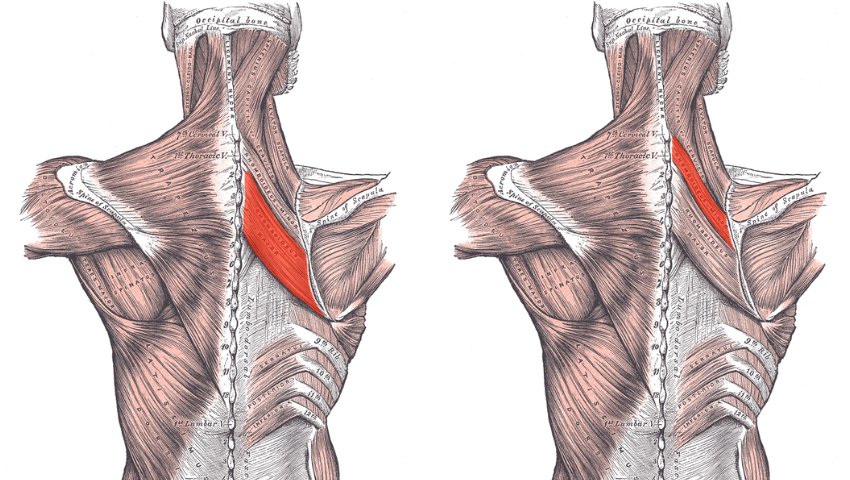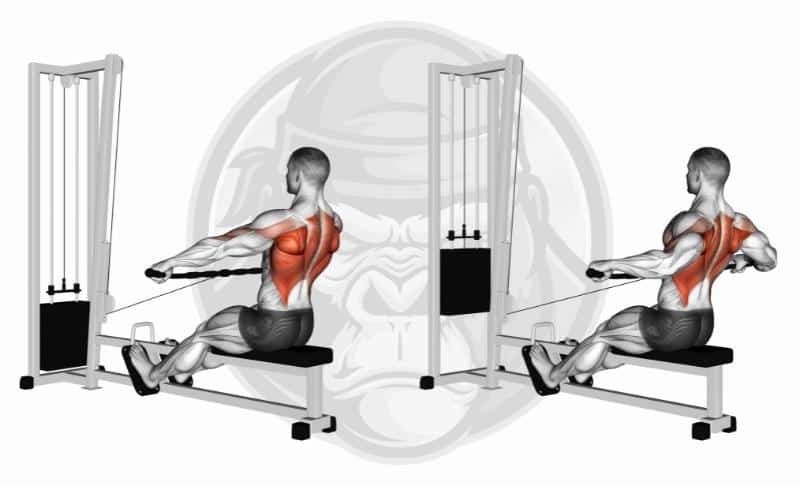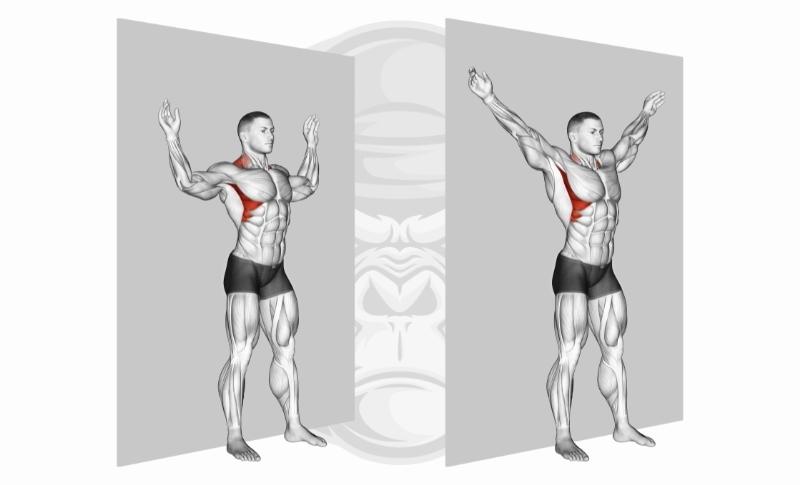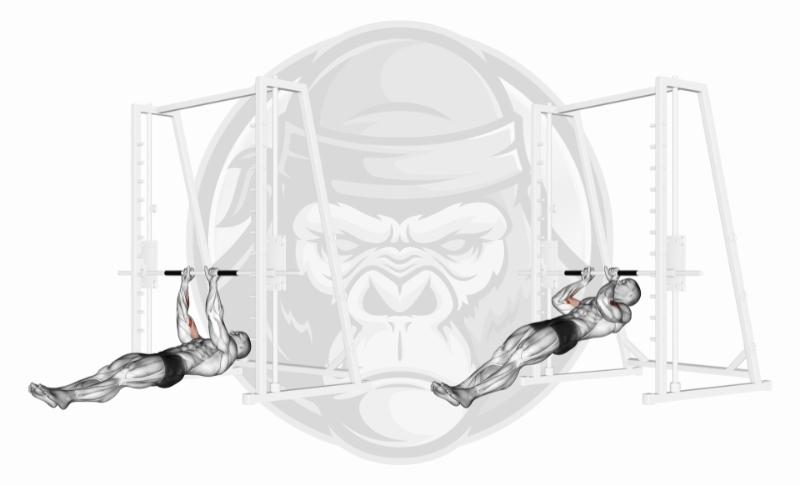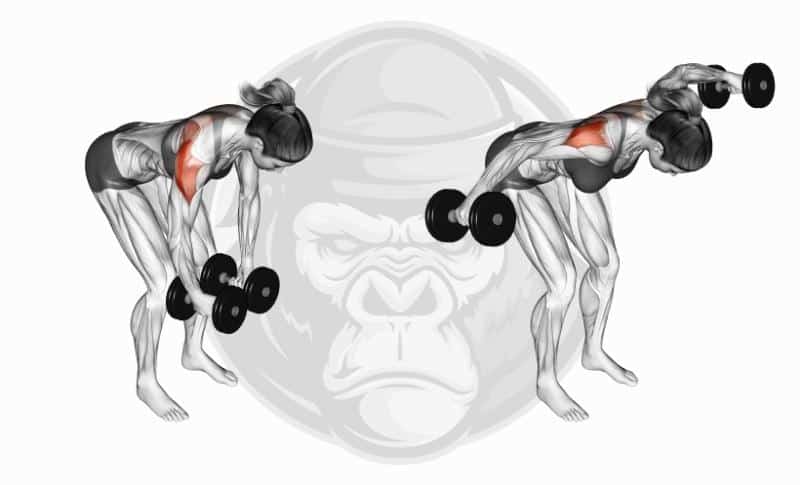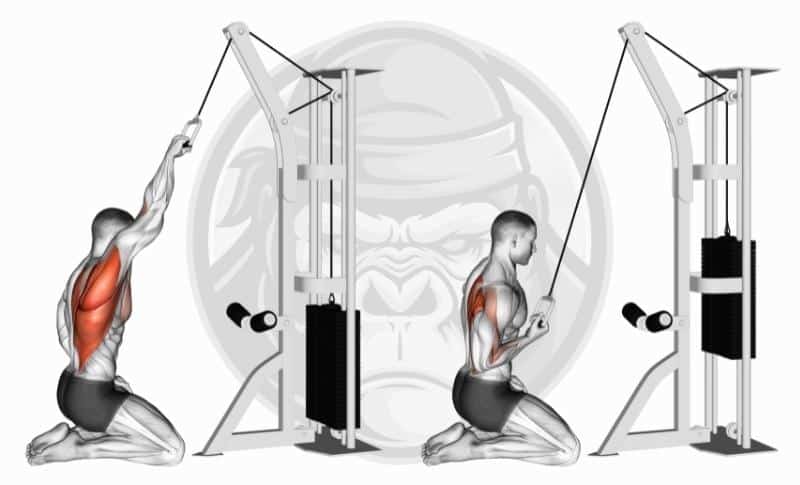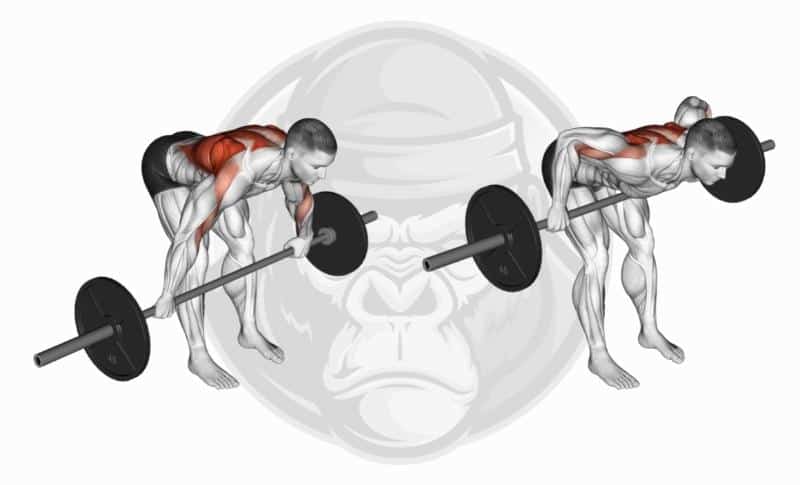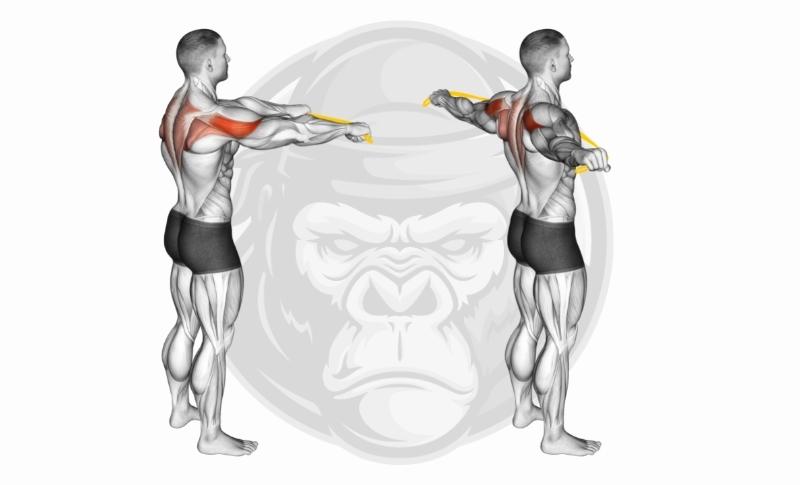Training
The 10 Best Rhomboid Exercises
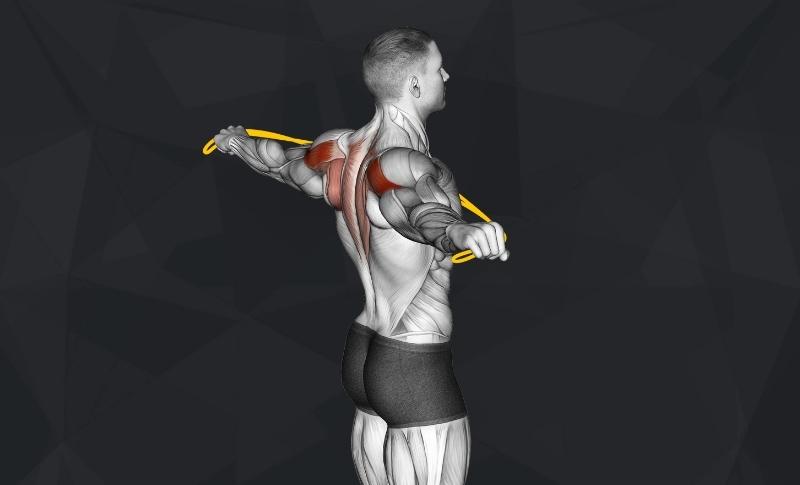
What are the best rhomboid exercises?
Will the best rhomboid exercises get you in the gym, building strength and achieving hypertrophy? Not likely… but it’s a start!
Knowledge is power, and today we’ve got a list of ten exercises for rhomboids that will sculpt and strengthen both the rhomboid minor and rhomboid major simultaneously.
If you start including these rhomboid exercises in your workouts, you’ll have jacked back muscles and shoulder blades in no time!
Let’s not waste any time and get straight into our favorite exercises for rhomboids.
Rhomboid Anatomy: What Are the Rhomboid Muscles?
The rhomboid muscles, located in the upper back, consist of two bilateral muscles:
- Rhomboid Minor
- Rhomboid Major
Whilst both muscles perform a similar job; the rhomboid major is the larger of the two muscles, located directly below the rhomboid minor.
Together, they create a rhomboid shape, hence the name.
The primary role of the rhomboid muscle is to retract the scapula superomedially and rotate the glenoid cavity.
This means that strong and healthy rhomboid muscles are essential for shoulder stability and rotation.
The rhomboid muscles are 1 of the 4 main superficial back muscles, with the other three being:
- Trapezius
- Latissimus Dorsi
- Levator Scapulae
What Are the Benefits of Rhomboid Exercises?
Since the rhomboid muscles are an integral part of the upper back, there are a couple of key benefits to training them.
1. Improved Posture
Your back muscles are responsible for helping keep your spine straight.
In the age of smartphones, and computers, “tech neck” has become a serious and far-too-common issue for everyday people.
Your rhomboid muscles help to pull your spine back into the correct, upright position.
If you suffer from weak rhomboids, your posture could also suffer.
2. Better Shoulder Stability
According to the American Academy of Orthopaedic Surgeons, 4 million Americans suffer from shoulder issues every year.
Whilst there can be many root causes for such issues, a common issue people suffer from is rounding of the shoulders.
Rounded shoulders may be caused by weak rhomboids if the muscles are unable to retract the scapular back into the correct position.
Training your shoulder muscles with incorrect posture may also lead to further shoulder problems later on.
How to Train the Rhomboid Muscles
If you’ve been following a weightlifting program, there’s a strong chance you’re already training your rhomboid muscles.
As they’re a part of the upper back, the majority of exercises you’re performing to train your back will likely be training your rhomboid muscles.
The key movement that’s required to activate the rhomboid muscles is the retraction of your scapular.
Row exercises incorporate this movement well, but it’s important to focus on the correct form and not overload the weight.
Focusing on retracting the scapular and squeezing in between your shoulder blades will help target the rhomboid muscles specifically.
The Best Rhomboid Exercises Ranked
Our exercise lists are created by determining the best exercises for muscle growth, core strength, and overall health and well-being.
This list isn’t a list of every possible rhomboid exercise available, so consult with a professional who understands your situation before taking our word as gospel.
However, we have been able to create a list of exercises for your rhomboid muscles that includes body weight, machine, and free weight training styles.
Here’s our list of the 10 best rhomboid exercises:
10. Chest Supported Shrugs
Great for:
A rhomboid exercise that targets the traps and upper body.
How to do it:
- Lay chest down on an incline bench
- Use a steep angle to target the traps and rhomboids
- Hold weights in each hand
- Slowly shrug your shoulders up towards your ears
- Hold and squeeze at the top of the motion
- Let your shoulders fall, rest a beat, and repeat
Why:
While shrugs aren’t necessarily the best rhomboid exercise on this list, they will certainly give your back muscles and traps something to talk about.
When training your traps, shoulders, and upper back, shrugs are highly recommended as a movement for these muscle groups.
When:
Include chest-supported shrugs into any back strength training workout, once or twice a week for optimal results.
Try 7 to 10 reps at first, and scale up in reps, or add more weight to your shrugs.
9. Wide Grip Seated Cable Rows
Great for:
Targeting the back muscles through a wide grip.
How to do it:
- Grab a bar attached to a cable machine with your hands at about shoulder-width or slightly wider
- Pull the handle towards your stomach, bracing your core and squeezing your shoulder blades
- Keep your back straight and your posture tall
- Lean forward and extend your arms to return to the starting position
- Repeat as desired
Why:
Seated rows specifically target the middle back and rhomboids, improving posture, strengthening the shoulders, and preventing injury or muscle strain.
Lats and rhomboids are the primary muscles responsible for movement in the seated row, so if you’re trying to bulk up in this area, rows are a must.
When:
You don’t necessarily need to be in the gym for this movement. You can successfully get the same strength training by using a resistance band at home.
8. Scapular Wall Slides
Great for:
A low-impact exercise for a daily movement that burns out the shoulder blades and back.
How to do it:
- Stand with your heels against a wall, your back and butt pressed against it
- Pull your chin into your neck while keeping your head stationary on the wall
- Keep your chin down and slowly raise your arms over your head, as far as you can reach
- Bring them back down to your sides, and lift them again
- Repeat as desired
Why:
Wall slides help to strengthen the lower and mid-traps, avoid shoulder injuries through strength development, and improve overall shoulder and scapular mechanics.
Wall slides promote smooth movements in your arms and shoulders and provide a solid stretch in the scapular and upper back muscles.
When:
Perform scapular wall slides as a warm-up to leg and back day routines or as part of your rest day stretching routine.
7. Prone Lateral Raises
Great for:
Isolating the lower back muscles and shoulder blades.
How to do it:
- Lie flat on your stomach on the floor with a light weight in each hand
- Rest your forehead on the ground and your arms fully extended at your sides
- Lift your arms at your sides until they are parallel to the floor
- Squeeze your shoulder blades together and hold
- Lower your arms to the ground and repeat
Why:
Lying on the floor for a lateral raise helps to prevent any momentum in the body, so you’re really forcing the rhomboids to work hard.
Avoid using heavy weights as this move really helps the rhomboid muscles shine through more reps than heavy weight.
This is one of our favorite rhomboid exercises with dumbbells, and you’ll see why once you attempt it.
When:
Prone lateral raises can be completed in the gym or at home if you have light weights to use.
This can be a helpful exercise to warm up the upper and mid-back before a challenging back day, so keep this movement in mind for back day.
6. Incline Pull-Ups
Great for:
Working the upper back and simulating a real-world pulling movement.
How to do it:
- Sit beneath a horizontal pull-up bar
- Hold the bar with an overhand grip and position your chest under the bar
- Prop your feet up onto your heels and hang from the bar
- Slowly and intentionally, pull your body up toward the bar
- When your chest reaches the bar, squeeze your shoulder blades and back muscles, and return to the starting position
- Repeat as desired
Why:
Incline pull-ups activate the rhomboids and delts, two of the major muscles we rely on for pulling anything.
Incline pull-ups are also a beneficial exercise for beginners who are just learning the technique and form. All you need is a bar a few feet off the ground, and you’re ready to train.
When:
Typically considered a back exercise by fitness buffs and weightlifters, incline pull-ups are a great addition to any intense strength training routine for your back and shoulders.
If you’re having trouble locating a low pull-up bar, we recommend checking out any local park in your area!
5. Rear Delt Flys
Great for:
Activating the core muscles to stabilize the body while strengthening the back muscles.
How to do it:
- Sit on a bench with your feet flat on the floor, and your knees bent at 90 degrees
- With a dumbbell in each hand, hinge forward at the hips
- Let your arms hang at your sides
- Do a reverse fly by raising your arms simultaneously, out to your sides at shoulder height
- As you perform the fly, lift your hips and chest away from your body
- Your upper body should resemble the letter “T”
- Reverse the movement, so your arms move slowly down to your sides, and your torso straightens
- Repeat as desired
Why:
Rear flyes target the rhomboids as a secondary muscle group, and they also engage the core to keep the body stabilized and balanced during each fly.
Work flys into your workout to improve your posture and build stronger, leaner shoulders and beefy back muscles.
When:
Rear flys can be incorporated into any back or arm workout. Start with five to ten reps per set and either add weight or reps as you feel capable.
4. One-Arm High-Angle Cable Rows
Great for:
Isolating the rhomboid muscle to build strength and improve posture.
How to do it:
- From a kneeling or standing position, hold the handle attached to the high pulley cable in one hand
- Keep your elbow close to your side and engage the core
- Retract the shoulder blade and pull the cable with your hand, squeezing your shoulder blades at the lowest point
- Return the cable weight to the starting position
- Switch arms and repeat as desired
Why:
The high angle of a one-arm cable row targets the rhomboids and shoulder blades in a unique way, forcing them to activate and get to work.
Keeping your posture strong during this movement will help to strengthen your upper and mid-back muscles along the way.
When:
Cable rows are a relatively low-impact movement and can do a lot of good for the back and shoulder muscles.
Our posture is impacted greatly by using computers and mobile devices all day — even if you don’t notice a slip in your posture, it’s likely to happen.
Cable rows can help to rebuild your back strength and get those muscles back to proper alignment.
3. Wide Grip Bent-Over Rows
Great for:
Targeting the mid-back for strength and muscular hypertrophy.
How to do it:
- Grab a barbell or the weight of your choice
- Stand with your feet hip-width apart
- Hinge forward at the hips to grab the bar at a wide grip, past shoulder-width
- Pull your shoulders back and engage your core
- Pull the weight up to below your knees for your starting position
- With your chest parallel to the floor, row the barbell up to your stomach with your elbows at your sides
- Squeeze your shoulder blades at the top of the movement
- Lower your arms and the barbell to below the knees and repeat as desired
Why:
For one exercise that works the lats, traps, rhomboids, and rear delts — bent-over rows are a solid choice.
The static position required in this move (because you’re bent over) means you’re working a few muscle groups isometrically and will help the spine’s extension and mobility.
When:
Bent-over rows with a wide grip are the perfect addition to any arm or upper back workout if you’re trying to reach those tricky mid-back muscles.
Rows can be real burners when they want to be, particularly if the wide grip means you’re targeting the often-neglected rhomboids. Strength training isn’t pretty, but it’s worth it!
2. Banded Pull-Aparts
Great for:
An isolation exercise that targets muscle groups in the shoulders and back.
How to do it:
- Stand holding the ends of a resistance band in each hand
- Raise your arms straight out, about shoulder height, with slight resistance
- Pull the band apart until your arms make a T with your body
- Hold for three seconds, then bring your arms back to the center
- Repeat as desired
Why:
Scapular retraction activates the muscles in your upper back to build strength and mass.
The rhomboids, traps, and delts are primarily engaged in pull-aparts, and you’ll feel it really quickly!
The movement and strength that pull-aparts require can also help you train for other exercises you do in the gym, like deadlifts, pull-ups, and presses.
When:
The convenience of banded pull-aparts is another reason they are one of our favorite rhomboid exercises for the shoulder blades and back muscles.
1. Face Pulls
Great for:
A dynamic exercise that can be worked into an upper body strength workout or a low-impact warm-up.
How to do it:
- Set your cable or resistance band at chest height, securing it around a post or whatever equipment you’re anchoring it on
- Your arms should be fully extended in front of you, with your hands tightly securing the cable
- Raise your elbows and pull your hands back towards your face, stopping at your shoulders
- Slowly release your arms and let them straighten
- Repeat as desired
Why:
Versatility is key when it comes to the #1 spot on any exercise list here at Jacked Gorilla!
Face pulls, of all the rhomboid stretches and exercises, excel at offering a dynamic stretch and a burn simultaneously.
To improve shoulder positioning and posture, it’s key to work the deltoids and rhomboids in the same move.
As we sit and stare at screens and phones all day, the body loses its posture and healthy form.
We can regain that posture and spinal strength through exercise, and face pulls are a huge help with this issue.
When:
Face pulls are one exercise you can do any day of the week, incorporated in any circuit or strength training workout.
Use them to warm up the muscles before a heavy lift or cool down on rest days.
FAQs About Rhomboid Exercises
Ready to build a stronger, leaner, more sculpted back?
If this sounds like you, keep reading for our answers to the most frequently asked questions about rhomboid exercises and what you should be doing.
Q: What do the rhomboids do?
The rhomboid muscles are located on the upper back, under the trapezius muscle, and are essential for posture.
They also pull the shoulder blades together, rotate the scapula, and help the shoulders with stability.
Q: What happens when you have weak rhomboids?
Weak rhomboids often result in chronic back pain and poor posture.
Because rhomboid strength is used during any overhead movement or throwing motions, and when these muscles are weakened, physical activities such as those listed become more challenging or can lead to injury.
Q: How do you stretch your rhomboid muscle?
With a rhomboid workout, obviously! Stretching the lower neck and upper back is the most obvious way to stretch the rhomboid muscles.
You can start with neck rotations and squeezing the shoulder blades together; both of these stretches will ease any tension or stiffness you may feel in the rhomboids or upper back.
Q: How do you strengthen a weak rhomboid?
You can do many stretches to build strength in both the rhomboid minor and the rhomboid major.
The best rhomboid exercises are those that build strength, help with posture, and prevent future injuries. In our opinion, face pulls are the best exercise to strengthen weak rhomboid muscles.
Q: How do I make my rhomboids thicker?
The best exercises to thicken the rhomboids in terms of mass and strength are face pulls, banded pull-aparts, and wide grip bent-over rows.
In our humble opinion, these three exercises are the best way to beef up the muscles supporting the shoulder blades and back.
Summary
Strengthening your shoulder and back muscles is no easy feat — it’s a huge commitment but one that you can achieve through commitment and consistency.
You’ll stand taller, feel more confident, and look strong and shredded everywhere you go.
The best rhomboid exercises will help you achieve the upper body you want; you just have to stay focused.
We’ve shared our favorite exercises for rhomboids, and now it’s your turn to go to work!
Here’s a quick recap of the 10 best rhomboid exercises:
- Face Pulls
- Banded Pull-Aparts
- Wide Grip Bent-Over Rows
- One-Arm High-Angle Cable Rows
- Rear Delt Flys
- Incline Pull-Ups
- Prone Lateral Raises
- Scapular Wall Slides
- Wide Grip Seated Cable Rows
- Chest Supported Shrugs

